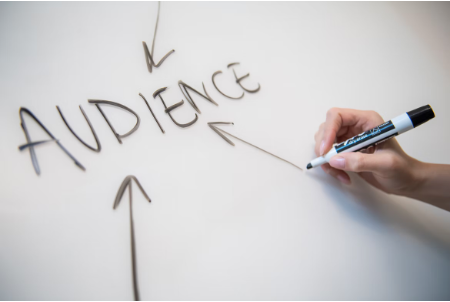The term “conversion rate optimization” (CRO) is used a lot in digital marketing, but its meaning can be unclear. In its simplest form, CRO is the process of increasing the percentage of visitors to your website who take a desired action.
This could be something like signing up for a newsletter, downloading a white paper, or making a purchase. Whatever the goal, CRO is all about improving how effective it is at achieving that goal.
Although CRO can mean the difference between a high conversion rate and an abysmal one, 68 percent of small businesses still don’t have a CRO strategy in place. Here, we’ll talk about how you can implement a strategy and start boosting those conversions for your business.

Boosting Your Conversion Rate: Key Strategies
There are many different ways to go about optimizing your website for higher conversion rates. In general, they can be divided into two main categories:
- Changes to your website’s design and layout
- Changes to your website’s content
Let’s take a closer look.
Design and Layout
One common CRO strategy is to make changes to your website’s design and layout. This could involve something as simple as changing the color of a button or adding an image to a page.
Sometimes, these changes can be quite drastic. For example, you might completely redesign your website’s home page or checkout process; you might choose to add interactive elements, like videos or polls.
be quite drastic. For example, you might completely redesign your website’s home page or checkout process; you might choose to add interactive elements, like videos or polls.
The goal of these changes is usually to make your website more user-friendly and easy to navigate. This can help increase the likelihood that visitors will take the desired action on your site.
Content Changes
While the design of your website is important, one of the most effective ways to increase conversions is to simply make your content more relevant and targeted. If you’re selling products or services, this means writing copy that is specifically designed to appeal to your target market.
For example, if you sell accounting software, your website copy should be geared toward small business owners or finance professionals. It should highlight the features of your product that are most relevant to this audience and address their specific needs and pain points.
The more relevant, targeted, and engaging your content is, the more likely it is to convert visitors into leads or customers.

SEO vs CRO (conversion rate optimization)
When working on revamping your content, it’s important to note that there is a difference between SEO (search engine optimization) and CRO. Both are concerned with increasing traffic to your website, but they go about it in different ways.
SEO is focused on making your website more visible in search engine results pages (SERPs). This is done through techniques like keyword research and link building.
CRO, on the other hand, is focused on making your website more effective at converting visitors into leads or customers.
Despite the way that experts in both fields often argued over which optimization strategy was more important, the overall opinion of the business world has shifted recently. The opinion now is that both SEO and CRO can work in tandem and that they are both important for any business with an online presence.
Conversion Rate Strategies and your Marketing Funnel
To best know how to sell your product to your buyers, it’s important that you understand the journey your buyer will be taking from the moment they find your content to the moment they make the purchase. Once you understand this journey, mapping out a CRO strategy becomes a whole lot easier.
There are three stages to the buyer’s journey: The Problem Awareness Stage, The Consideration Stage, and The Decision Stage.

As we talk about what kind of marketing you should be doing at each stage of the buyer’s journey, keep this diagram in mind to help you transition potential customers from lead to client.
The Problem Awareness Stage
Also known as the discovery stage, the problem awareness stage is when buyers are just becoming aware that they have a problem or a need. They might not even be entirely sure what the solution to their problem is, but they know that something isn’t quite right.
This stage is referred to as the top of the marketing funnel, and at this stage, your marketing content should not be focused on selling. Content at the top of the funnel should be focused on education and building trust with your buyer. You want to be the source of information for them as they start to research their options and figure out what, exactly, they need.
Buyers in this stage will not tolerate friction between themselves and your business, so it’s important that you give them space to make their own decisions about your product.

Friction in marketing is any point where a customer may potentially get stuck or frustrated with a company. This could be anything from a hard-to-find contact page to a form that takes way too long to fill out. While friction is important, as it keeps the process moving – imagine if you never asked your clients for their email address – too much friction can cause customers to get frustrated with you.
At this stage, too much friction can cause potential clients to drop you entirely. With nothing invested at this point and plenty of other options available, they may just decide that you aren’t worth it. This is why it’s important that your marketing at this stage is easy to access and as easy to understand as possible. The more readily available the information about your product is, the better your chances of converting leads into clients!
The Consideration Stage
Once the buyer has become aware of their problem, they have moved into the Consideration Stage of the funnel. Buyers in this stage are now likely considered to be leads, and are likely to be interacting with your content with intent. The Middle of the Marketing Funnel is truly the bread and butter of any B2B business, as this is the point where your content will have the most impact in moving a lead from being interested, to becoming a customer.
While there are many kinds of content that work well in the Consideration stage, here are a few options for you to consider:
- Comparisons – show how your product is different/better than your competitors
- Case Studies – stories of how your product has helped other businesses similar to your buyer
- Product Pages – more in-depth information about what you’re selling and how it works
All of these content types are meant to serve one purpose: to help the buyer understand how your product can solve their specific problem. Buyers in the middle of the funnel will tolerate some friction, but not as much as they will once they are sold on your product.
The Decision Stage
The final stage of the buyer’s journey is the Decision Stage – right at the bottom of the funnel. At this point, your lead has been through your content, and they understand how you can help them. Now they just need that final push to make the purchase.
There are a few things you can do in order to nudge your lead towards making that final decision:

- Use strong calls to action: A CTA is only effective if it’s clear, concise, and actionable. Make sure your CTAs are all of those things and place them prominently throughout your content.
- Offer a sense of urgency: If a lead is on the fence about whether or not to make a purchase, sometimes giving them a time limit can be the push they need to finally decide.
- Use social proof: Showing your leads that other people have made the decision to buy from you can be a powerful way to get them to do the same.
- Offer a guarantee: This is especially effective if your product is on the pricier side. By offering a money-back guarantee, you’re taking away some of the risks for your lead, making them more likely to make a purchase.
Buyers at this stage will tolerate the most amount of friction. As they are already set on your product, they are more likely to be willing to put in the extra time to find that form on your website or fill out a lengthy signup form in order to get to your product.
Of course, just because the customer will tolerate a lot of friction, that doesn’t mean that you should make things harder for them at this stage. Information and forms should still be easy to access and read, to make the decision that much easier for leads. If your website is known for being easy to use, your buyers are more likely to invite others – which means more potential conversions.
The Takeaway
Conversion rate optimization is vital for any business that wants to increase their online sales, and there are a number of strategies that can be employed in order to achieve this.
By understanding the buyer’s journey and mapping out a content strategy accordingly, you can ensure that your content is working hard to convert your readers into customers.
At Pollock Marketing Group, you can get help with your content at every level of the marketing funnel. Contact us to learn more!

